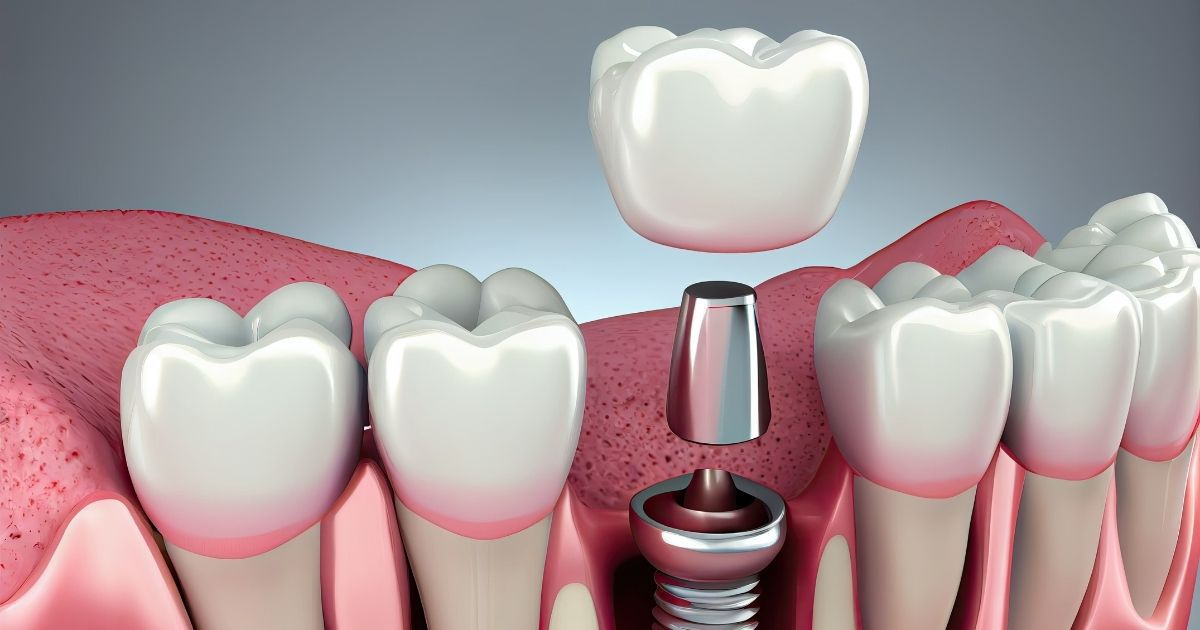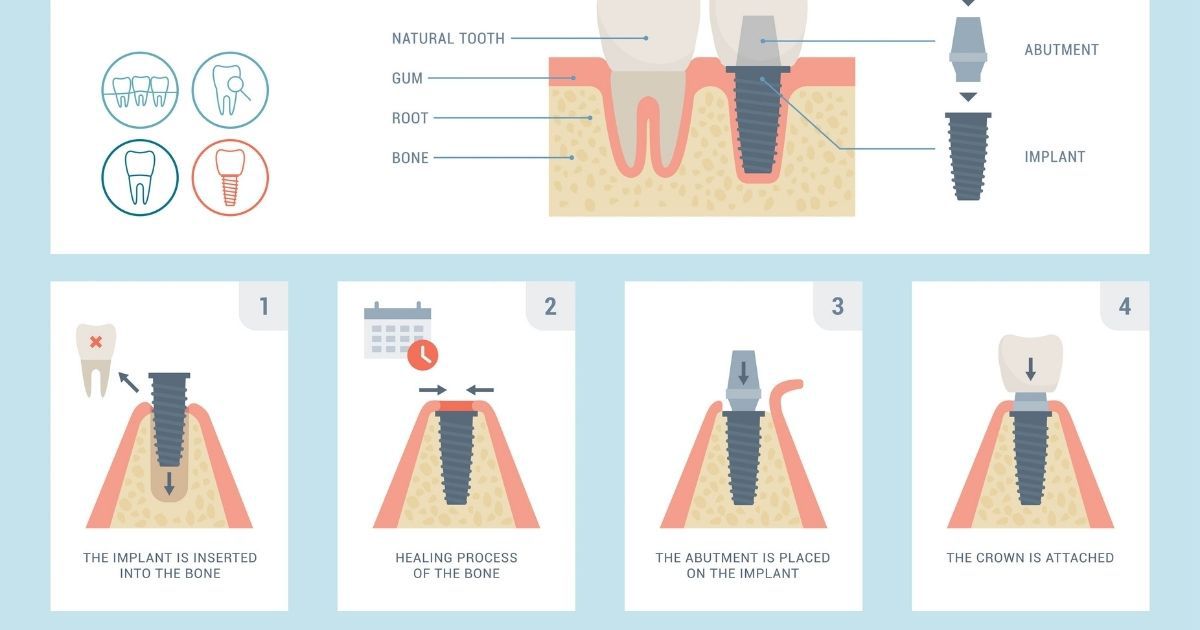The role of healing abutments for dental implants
Dental implants have transformed the approach to tooth loss, providing solutions that restore both function and aesthetics. A critical component in the success of dental implants is the healing abutment, which plays a key role in the integration and health of the implant site.
In this blog post, we explore the importance of dental abutments and how they contribute to the overall success of dental implant procedures.
Reading time: 4 minutes

What are healing abutments?
Healing abutments, also known as healing caps or healing cuffs, are small components that attach to the top of the dental implant during the initial healing phase. They serve as a link between the implant buried in the jawbone and the oral environment.
These are temporary and their primary function is to shape and maintain the gum tissue around the implant site, ensuring it heals correctly and provides a natural-looking emergence for the final restoration.
How long does the healing abutment stay in?
A healing abutment typically stays in place for about one to four weeks. This period allows the gum tissue to heal properly around the abutment, forming a stable base for the final implant crown.
The exact duration can vary depending on the individual's healing process and the specifics of their dental implant surgery. Patients need to follow their dentist's recommendations closely to ensure optimal healing and the success of the implant.
Types of abutments
Abutments are crucial components in dental implantology, serving as the connection between the dental implant embedded in the jawbone and the prosthetic tooth (crown, bridge, or denture) placed on top. There are several types of abutments, each designed to cater to different clinical situations and aesthetic requirements. Here are the most common types:
Ceramic abutments
Ceramic healing abutments are beneficial for their biocompatibility and aesthetic qualities. They help in maintaining the health of the mucosal barrier around implant abutments.
Customisable abutments
These abutments allow for individual adjustments, which can be particularly useful in aesthetic cases where precise soft tissue management is required. They offer a higher level of personalisation for better aesthetics and comfort.
Stock abutments
Stock abutments are pre-manufactured in various shapes and sizes. They are widely utilised due to their immediate availability and ease of use. They may not provide a perfect fit for all patients due to their standardised shapes.
Angled or offset abutments
These are used when the dental implant is placed at an angle due to anatomical constraints. Angled abutments help align the prosthetic correctly with the rest of the teeth, ensuring functionality and a natural appearance.
Zirconia abutments
Made from zirconia, these abutments are preferred for their aesthetic qualities, as they are tooth-coloured and blend seamlessly with natural teeth. They are particularly useful in the front of the mouth, where metal abutments might be visible through thinner gum tissue.
Titanium abutments
Titanium is the most common material used for abutments due to its strength and compatibility with body tissues. Titanium abutments are durable and highly effective in transferring force from the prosthetic to the implant.
Gold abutments
Gold abutments are not as common nowadays. However, they are still used for their biocompatibility and gentle impact on natural teeth during chewing.
Each type of abutment serves a specific purpose and is selected based on factors such as the location of the implant, the patient’s aesthetic requirements, and the functional demands of the prosthetic teeth.
Talking to a dentist can help you figure out which option is best for you.

Benefits of using healing abutments
Healing abutments may bring a lot of benefits that contribute significantly to the success and efficiency of dental implant procedures:
- Guided tissue healing: healing abutments shape the gum tissue around the implant site, promoting better healing and forming a tight seal to reduce the risk of infection and other complications.
- Aesthetic outcomes: abutments help create a natural-looking emergence for the final crown, enhancing the aesthetic integration with surrounding teeth.
- Protection of the implant site: by covering the top of the implant, healing abutments protect the internal components from bacteria during the healing phase, which is key for preventing infections and ensuring the longevity of the implant.
- Reduced treatment times: healing abutments keep the gum line open, eliminating the need to reopen the gum to place the final abutment, thereby simplifying the restorative phase of the implant procedure.
- Facilitates oral hygiene: Their design, makes it easier for patients to clean around the implant site, which is vital for maintaining oral hygiene and preventing peri-implant diseases.
These points illustrate the multifaceted role of healing abutments in not only safeguarding the implant site but also enhancing the overall treatment and patient experience.
Cost of dental abutments in the UK
The cost of dental abutments in the UK can vary widely depending on the type of abutment and the complexity of the dental implant procedure. On average, abutments can cost anywhere from £200 to £500 each. Custom abutments, tend to be at the higher end of this price range.
Additionally, the total cost may also include fees for the dental crown or other prosthetic components, as well as the services provided by the dental professional. Patients should consult with their dentist to get a detailed breakdown of costs specific to their treatment plan.
Conclusion
Healing abutments are a fundamental component of the dental implant process. They not only aid in the proper healing of the implant site but also ensure that the final restoration fits seamlessly and looks natural.
By using the appropriate healing abutment, dentists can significantly enhance the outcome of dental implant treatments, leading to higher patient satisfaction and long-term success of the implant.